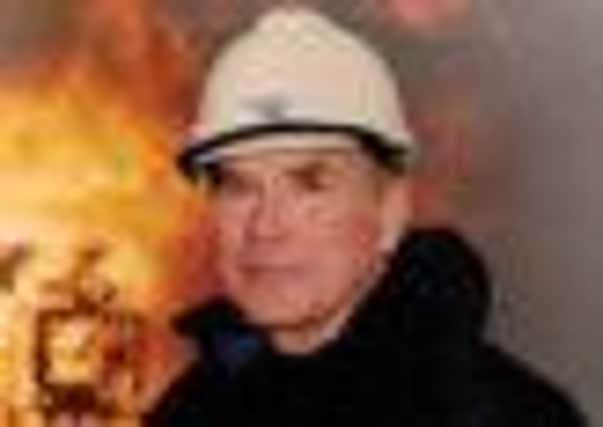Obituary: Dr Myles Bowen OBE, geologist and North Sea oil pioneer


MYLES Bowen was a pioneer of North Sea oil exploration from the late 1960s, helping discover (and personally name) the Brent oilfield, one of the early fields that would change the face of the UK energy sector. Brent crude is still used today as a standard benchmark for oil prices. The geologist Bowen was best known for his work with Shell Expro and later with Enterprise Oil. Colleagues compared him to the most successful prospectors of the great “gold rushes” of the 19th century, particularly in the US and Canada, saying he combined geological analysis with a combination of instinct, risk-taking and pure luck.
“He was a true pioneer, an adventurer. He had a nose for finding oil and gas,” said David Scoffham, who worked with Bowen on exploration at Enterprise Oil in the 1980s.
Advertisement
Hide AdAdvertisement
Hide AdBP had beaten Shell Expro to the punch by discovering the giant Forties field east of Aberdeen in 1970. Dr Bowen and his team at Shell found the Brent field north-east of the Shetland Islands the following year.
Both oil giants got production under way in the mid-1970s, just in time to cash in on the rocketing prices caused by an oil embargo launched by Arab producing states in retaliation against pro-Israeli US policies in the Middle East.
Although originally from Kent, Bowen had first begun an affair with Scotland after he moved from Oxford University to take a PhD at Edinburgh University in 1954. Hired by Royal Dutch Shell that same year, he travelled the globe – including to Borneo, Nigeria and Venezuela – as a geologist and mapper, often in dangerous terrain and facing hostility.
“Being unmarried, I got all the rough stuff,” he recalled, “in sole charge of 80-odd labourers on a ‘pitting and auguring’ survey, not speaking a word of Malay, the local language. And there were leeches, as well as shooting rapids, and more leeches! I did that for three years with only one four-week break. Venezuela was very rough – drug runners and very unfriendly Indians. And no maps!”
He was a born adventurer, and in Borneo in 1957 he found time to climb the 13,480-feet King Edward’s Peak on Mount Kinabalu, via a route which became known as Bowen’s route.
John Myles Crowdy Bowen (always known as Myles), was born in Kent on 23 August, 1928, to Royal Navy Commander Harold Townsend Bowen and his wife Cicely Cooper.
He attended the historic Sherborne school for boys near Yeovil in Dorset before being called up for his national service just after the war and serving in the Royal Artillery. He went up to Oxford (Lincoln College) in 1948 and graduated with a First in geology in 1951.
It was then that he moved to Edinburgh and got his PhD with a thesis on “the carboniferous stratigraphy of the English/Scottish border area”.
Advertisement
Hide AdAdvertisement
Hide AdAfter graduation, he joined Royal Dutch Shell, which promptly sent him off to Borneo while Asia was in the turmoil of the Malayan Emergency involving British and Commonwealth troops against communist insurgents.
He married Margaret Guthrie, from a Hawick, Roxburghshire, family in 1961 and by 1969 was working as a geologist in London with Shell UK, eventually becoming the company’s director of exploration.
In his own words, “the prevailing view of our bosses in 1969 was that most of the gas in the southern North Sea had been found and that no oil would be found in the north”.
He went on to prove them wrong, helping discover not only Brent but, after joining Enterprise Oil, the Nelson field. He revealed in an interview that he had personally named the Brent field after the Brent goose, a stubby-billed species.
Dr Bowen’s job was to seek potential oil or gas fields, have his men send shock waves down through the ocean and measure sound waves from the sea bed, seeking a sandstone layer geologists call a “reservoir”, which might be soaking up and trapping oil. Hence, the Brent field was found. The seas were so rough that, in those days, even the idea of getting an oil rig safely into the northern sector of the North Sea was questionable.
Dr Bowen retired from Shell in 1982 but not for long. In 1983, Prime Minister Margaret Thatcher backed the setting up of the independent Aberdeen-based company Enterprise Oil to exploit North Sea oil assets after state-owned British Gas pulled out of the oil sector.
Dr Bowen was called out of retirement in 1984 to be Enterprise Oil’s director of exploration, drove the company upwards into the top 100 of the FTSE index and set about discovering new oilfields.
These included the Nelson field, in North Sea Block 22/11, with reserves of half a billion barrels, which went into production in 1994. Immediately after the lucrative field had been discovered, Dr Bowen and his chief executive officer at Enterprise Oil were in the latter’s office overlooking Trafalgar Square and Nelson’s Column, contemplating a name for the new field. Their answer was immediately obvious.
Advertisement
Hide AdAdvertisement
Hide AdDr Bowen finally got his real retirement in 1996, living in the picturesque village of Lustleigh in Devon but still pursuing his lifetime hobbies of motorcycling, falconry and sailing – including to and fro across the Atlantic, teaching many a young would-be yachtsman how it’s done.
He eased off on the mountaineering but continued to be sought out as a consultant in the oil industry.
Dr Bowen is survived by his wife Margaret and daughters Belinda, Joanna and Jenny.